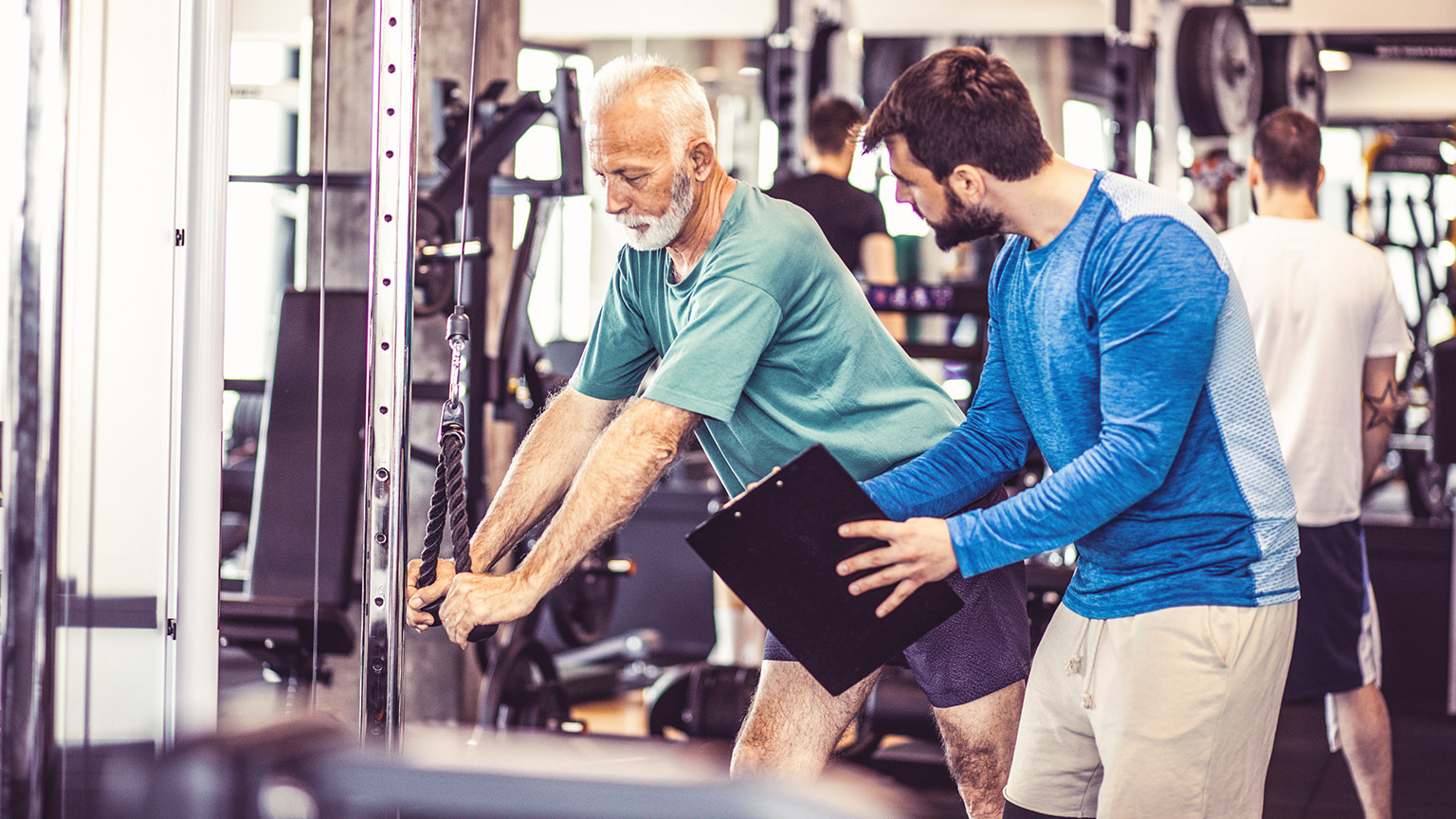In this topic, you’ll gain an understanding of the variety of fitness testing practices and equipment to ensure accurate and consistent results when developing client fitness programmes.
You will gain confidence in selecting and utilising suitable fitness tests to perform on your clients to help develop a personalised fitness programme that meets their specific goals.
In this topic, we’ll cover:
- Fitness testing
- Selecting a suitable fitness test
- Fitness testing preparation
- Principles of fitness testing
- Fitness testing sequence
- Fitness testing results
Fitness testing is a key component when developing a programme for clients that wish to improve their health and fitness. It involves a series of assessments evaluating different aspects of a client’s physical fitness, such as cardiovascular endurance, muscular strength, and flexibility.
Fitness testing is typically conducted before the client undertakes any form of exercise and helps establish a baseline level of fitness. The results will help you identify your client’s starting levels to inform the development of a personalised fitness programme. Fitness testing can also be used periodically throughout the programme to monitor and track your client’s progress whilst making any necessary adjustments to their programme.
Measuring clients' resting heart rate (RHR) and blood pressure (BP) is the basic requirement that must be fulfilled. This is the minimum standard that should be performed on all clients. Any additional tests you decide to conduct for your client should be specific to their goals.
The following lists the main components of fitness that may be suitable to test to achieve your clients desired outcomes.
- Flexibility
- Movement/mobility
- Body composition
- Cardiovascular endurance
- Muscular endurance
In the following video, Ben will explain the purpose of fitness testing.
Let’s look at each fitness component and the suitable tests that can be selected for programme development.
Flexibility
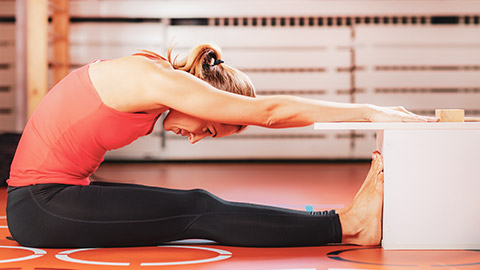
The sit and reach test is the most common flexibility test. It measures the flexibility of the lower back and hamstrings.
Preparing for the flexibility test
This test requires your client to be barefoot and sit on the floor, preferably with their back and head against a wall. Your clients’ legs should be out straight with knees against the floor.
You will need to place a box flat against your client’s feet and have them stretch their arms out towards the box.
Place a ruler on the box and move the zero end towards your client’s fingertips. When the ruler touches their fingertips, you have the “zero point”, and the test can begin (Tests For Sports, 2023).
Starting the flexibility test
At this point, their head and shoulders will come away from the wall. Ensure that your client doesn’t strain, bounce, or jerk their body to reach further.
As your client slowly leans forward, their fingertips should reach along the ruler's length. Once the client has reached their limit, have them hold their stretch for 3 seconds. Record the distance in centimetres. This is their baseline for flexibility. You can have your client perform 3 stretches so you can record their best stretch.
Movement/Mobility
A well-known movement/mobility test is the overhead squat test.
This testing method is used to obtain a general indication of dynamic posture. The test can identify muscles that may be compensating (overactive) for those underactive muscles with the intention of addressing these muscle imbalances. For this test, the client will perform a basic squat with their arms straight up in the air whilst you assess the movement and mobility.
Preparing for the movement/mobility test
This test requires your client to be barefoot. Have your client stand up straight, toes facing forward and with their hands over their head. Their arms should be aligned with their ears.
Instruct your client to focus on an object straight ahead. Ensure their feet, ankles, and knees are also straight. The lumbo-pelvic-hip complex (LPHC) should be in a neutral position.
Starting the movement/mobility test
As your client stands in the prepared stance, instruct the client to squat down to roughly the height of a chair and return to the starting position.
Have them repeat the movement whilst you walk around them, observing their body from each position (anterior and lateral). While your client is performing the overhead squat, you can assess their body from different angles.
The following table summarises the anterior and lateral views and lists areas of the body that should be observed during an overhead squat test (National Academy of Sports Medicine, n.d.).
| View | Observed areas of the body | Assess if… |
|---|---|---|
| Anterior | Feet |
|
| Anterior | Knees |
|
| Lateral | Lumbo-pelvic-hip complex |
|
| Lateral | Shoulder |
|
This information may be useful when designing your client’s personalised programme.
Body composition

Undertaking a body composition test can help you analyse your client’s body fat and muscle mass in more detail. There are 3 types of tests that are frequently used to obtain information composition of your client’s body. These are:
- Body Mass Index (BMI)
- Skinfold testing
- Girth measurements
Body Mass Index (BMI)
To determine your client's BMI, you will need to determine their height and weight. However, BMI testing does have limitations and should not be used alone. Other tests should accompany the BMI test to have a more accurate reading of your client’s overall body composition.
BMI testing provides a convenient guide to measuring body size, so many health and fitness professionals still use this tool when testing their clients. However, it is imperative that you consider other factors that may impact the accuracy of BMI results. These include:
| Age | Mature clients that have a higher BMI can be helpful to protect against malnutrition or from falling. |
|---|---|
| Gender | Both men and women have different fat ratios that are stored in different parts of the body. |
| Ethnicity | BMI is less accurate for certain ethnic groups. Clients of Asian descent can have more body fat on a smaller frame, so a healthy BMI range would be lower for this group. Clients that are Māori or Pasifika often have a higher bone density and more muscle mass. In this group, a healthy BMI range would be higher. |
“BMI is unable to measure:
- the amount of fat and muscle in your body.
- whether you have excess body fat.
- where fat is located on your body.
BMI does not recognise that some people in the healthy BMI weight range can have higher levels of body fat that you can’t see. This can be more of a risk than someone with a BMI above the healthy range that has more muscle.
BMI is less accurate in very muscular or athletic adults because muscle weighs more than fat. People with a lot of muscle can be classed as ‘above the healthy weight’ range even if they’re lean and fit”(Heart Foundation, n.d.).
When measuring BMI for a client, it is important to recognise if their results are falling within a normal range, or if they are under or above the normal ranges. See the following general BMI ranges.
| Below Normal | Normal | Above Normal |
|---|---|---|
| Less than 18.5 | 18.5-24.9 | 25 or more |
Using a BMI table/chart will help identify where within the range your client sits. See the following image of a BMI table.
Try it out
Read the Client Profile and the instructions that follow.
Use the following BMI Calculator to calculate your client’s BMI.
Then obtain the same details of a friend or a family member and use the same calculator to determine their BMI.
Disclaimer: BMI is a useful measurement of growth for most, but it is only an estimate, and it is not able to differentiate between body fat and muscle mass.
In addition, BMI may not be appropriate for people, particularly children, with certain health conditions, such as some endocrine or genetic conditions.
This calculator is not appropriate for women who are more than 10 weeks pregnant or children under 2 years of age.
Using the forum, discuss with your fellow peers the following:
- What BMI did each client receive?
- Explain for each client whether their BMI fell below normal, normal or above normal range.
- Discuss whether you feel this was or was not a good test for each client and why.
- List other Body Composition tests that could be included alongside the BMI test for further accuracy and reflection of each client’s body mass.
Skinfold testing
Skinfold testing is a popular technique to estimate the amount of fat on your client’s body. It involves using a tool called a caliper to lightly pinch the skin and underlying fat in several places. This quick and straightforward method of estimating body fat requires a high level of skill to get accurate results.
The following lists the 4 sites that can give a good indication of your client’s percentage of fat on their body.
- Tricep Skinfold: Located on the posterior midline of the upper arm
- Biceps Skinfold: Located on the anterior midline of the upper arm over the belly of the biceps muscle (PT Direct, n.d.)
- Subscapular Skinfold: Located on the inferior angle of the right scapula (under the lowest point of the shoulder blade)
- Suprailiac Skinfold: Located just above the front forward protrusion of the hip bone, at the side of the stomach (just above the iliac crest at the midaxillary line)
Try it out
Take a look at the following video where Ben explains how he performs skin fold tests on his model, Lee.
Find a family member or friend and measure the 4 sites using a caliper. Using the online calculator from TrainerMetrics, enter your client’s details and record their measurements to calculate their body fat. Compare the results in the “Body fat % Classification Chart” located under the calculator.
- How did your client’s results compare to the Classification Chart?
- Review the results and start thinking about appropriate programme design that might be suitable for your client to achieve their ideal fat percentage in their body composition.
- Do you think this test alone will help you develop a thorough personalised programme for your client?
Girth measurements
Common girth measurements include:
- Waist-to-hip ratio
- Chest, thigh, and bicep
Waist-to-hip ratio
A method for assessing the amount of fat stored around the waist, hips and buttocks is the waist-to-hip ratio (WHR).
Gavin Van De Walle from HealthLine.com states that you can measure your client’s hip-to-waist ratio using the following 3 steps.
Step 1:
Stand up straight and breathe out. Use a tape measure to check the distance around the smallest part of your waist, just above your belly button. This is your waist circumference.
Step 2:
Then measure the distance around the largest part of your hips — the widest part of your buttocks. This is your hip circumference.
Step 3:
Calculate your WHR by dividing your waist circumference by your hip circumference (Watson, 2018).
According to the World Health Organisation (WHO), a moderate WHR is:
- 0.9 or less in men.
- 0.85 or less for women.
Chest, thigh, and bicep
The measurements of the chest, thigh, and bicep can be taken using a tape measure to help monitor the change in size over time. This is helpful if your client wishes to increase body mass. The measurements will identify the baseline at the beginning of a programme and can be compared with the results of their measurements at the end of the programme.
The following table explains how to measure the chest, thigh, and biceps using a measuring tape.
| Chest | Move your client’s arms upward to access the upper torso. While their arms are raised, place the measuring tape around their upper torso under their armpits. Once the tape measure is in place, ask your clients to place their arms back down. Record the measurement as your client exhales. |
|---|---|
| Thigh | Ask your client to roll up their shorts. Place the measuring tape around the largest point of the upper thigh when viewed from the front. Record your client’s measurement. |
| Bicep | Ask your client to roll up their sleeve. Instruct your client to raise their arm and bend their elbow to a 90° angle. Place the measuring tape around the highest point of the bicep, making sure it is not flexed. If you specifically want to take the measurement of the flexed bicep, be sure to make a note of that when recording the measurement. |
In the next video, Ben demonstrates how to get accurate girth measurements on a variety of sites
Cardiovascular endurance
Cardiovascular endurance refers to the ability of the heart, lungs, and circulatory system to supply oxygen-rich blood to the muscles during sustained physical activity. In other words, cardiovascular endurance testing will measure your client’s ability to perform a prolonged exercise without excessive fatigue. This test will determine your client’s overall physical fitness. Let’s look at a few cardiovascular endurance tests that may be suitable for your client.
The beep test
The beep test is an excellent method to assess your client’s baseline level of their overall fitness.
It requires your client to run back and forth along a 20-meter distance, trying to reach the opposite end before a beep sounds. The time between beeps decreases gradually, requiring your client to increase their speed as the test progresses. The test continues until your client can no longer keep up with the beeps.
The beep test can be challenging and intense. The beep test is a maximal test and should only be used on conditioned clients or athletes. Deconditioned clients should be using a sub-maximal test.
Try it out
Using the following beep test video, try testing it out for yourself. Stop the video and record the time it took before the beeps caught up to you.
3 minutes step-up test
A less strenuous way to test your client’s cardiovascular endurance is by having your client perform a 3-minute step-up test which measures your heartbeat after 3-minutes of walking up and down a single step.
The following video will provide you with:
- Set-up instructions
- Technique demonstration
- A 3-minute timer with 'up, up, down, down" guidance
- A 1-minute timer at the end to measure heart rate
- Cardiorespiratory fitness norms for males and females of different ages (Chart)
Submaximal cardiovascular test
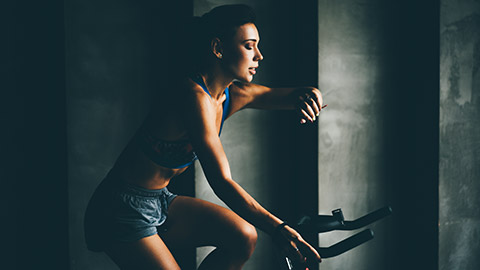
A submaximal cardiovascular test is individual typically an exercise performed on a treadmill or stationary bike at a moderate intensity, while the client’s heart rate, blood pressure and other cardiovascular responses are monitored. These measurements are used to estimate the individual's cardiovascular fitness.
Muscular endurance
Muscle endurance is the ability of a muscle or group of muscles to sustain repeated contractions over an extended period of time. It is a component of muscular fitness, which also includes muscle strength, power, and flexibility.
How many sit-ups or push-ups can you do in a minute? The 1-minute sit-up and 1-minute push-up test will assess the number of sit-ups or push-ups your client completed in a minute.
Make sure your assist your client in performing these exercise movements safely to ensure they do not strain or injure their body while they are being tested.
When to perform fitness testing
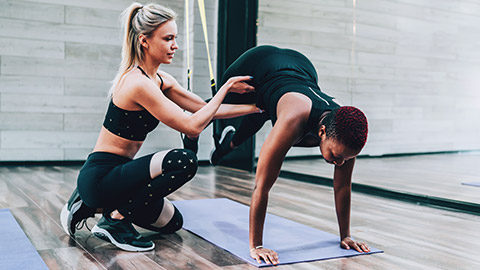
Fitness testing is not a one-time event that occurs only at the beginning. Fitness testing should be conducted at various points in time depending on the purpose of the test and the client that is being tested. Let’s look at some general guidelines.
Baseline testing
Before starting any exercise or fitness programme, it's important to establish a baseline of your client’s fitness level. You can refer back to the baseline measurements as your client progresses through their fitness journey.
Regular testing
Regular fitness testing can be used to track and monitor progress and identify areas in the programme that need improvement. The frequency of testing will depend on your client’s goals, training programme, and fitness level. For most clients, testing every 4-8 weeks is sufficient.
Periodically throughout the year
Fitness testing can also be conducted periodically throughout the year to ensure that your client’s training programme is still effective and to identify any areas that need improvement.
Overall, the frequency of fitness testing will depend on each client’s goals and training programme.
Testing must be conducted with care and in accordance with standard protocols to achieve a consistent and accurate results, no matter who performs the test. Be mindful that other health and fitness professionals may also be conducting similar testing. This ensures that the results of any replicated tests are achieving validity.
Benefits of fitness testing
The following list highlights some of the benefits of conducting fitness tests for both the client and the efficacy of programme design. Fitness testing enables the exercise professional to do the following.
- Identify strengths and weaknesses of the athlete.
- Monitor progress by comparing results from previous tests.
- Enhance motivation. There is nothing more satisfying than your client seeing their hard work pay off by noticing improvements that reach toward their goals.
- Provide information for the design and modification of training programmes. It can be used to measure the success of your developed training programme.
- Help clients set appropriate goals for fitness development.
Ben summarises the various types of fitness tests in the following video. Pay close attention to his expert tips and tricks on the different tests and their suitability to various clients goals and aims.
Selecting suitable tests is crucial when conducting fitness testing as it ensures accurate and reliable measurement of a client’s fitness level. It is essential to select tests that are appropriate for the client’s age, fitness level, and fitness goals.
The wrong choice of tests can lead to inaccurate results and a misinterpretation of an individual's fitness level. For example, using a maximal aerobic capacity test on someone not physically fit could be dangerous and lead to injury. Fitness tests should be 'specific' to the goals and aims of the client (e.g., you wouldn't give a Vo2 Max test to a client whose sole focus was to build muscle mass) and 'individualised' to the level of the client (e.g., you wouldn't give a 1RM deadlift test to a client who has never lifted weights before). Selecting the appropriate tests will also help to identify areas that require improvement, allowing the client to focus on specific exercises and activities to enhance their overall fitness level.
Additionally, using the proper tests will ensure that progress can be accurately tracked over time, providing motivation and allowing for adjustments to be made to training programmes as necessary. In summary, selecting suitable tests is critical for obtaining accurate results, identifying areas for improvement, and ensuring that fitness goals are achievable and realistic.
There are a variety of tests that can assess each component of fitness. It is encouraged to research and stay up to date with current testing methods. Below are a few examples of additional tests that are suitable for each fitness component. If you are unfamiliar with any listed, be sure to conduct some research to help you when making decisions of suitability to your client.
| CARDIOVASCULAR ENDURANCE / AEROBIC CAPICITY TESTING |
|
|---|---|
| MUSCULAR ENDURANCE AND STRENGTH |
|
| SPEED, POWER AND AGILITY |
|
| BODY COMPOSITION (ANTHROPOMETRY) |
|
| FLEXIBILITY/MOBILITY |
|
The following are additional tests that can also be used to measure your health and fitness levels:
- Blood pressure (BP)
- Resting Heart Rate (RHR)
Any additional tests you decide to conduct for your client should be determined by their age, activity levels, and goals.
Try it out
Read the following Client Profile and the instructions that follow.
Client Profile
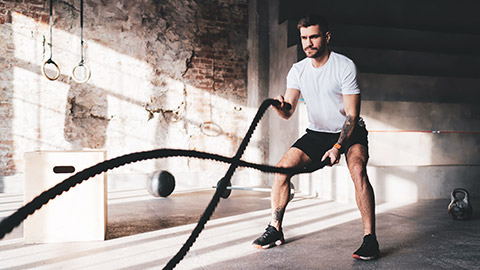
Your client is a 28-year-old male who has been training for the past 6 months with the goal of increasing his overall body mass.
He currently weighs 85kgs and is 182cm tall.
He has a moderately active lifestyle and works as an accountant, which involves sitting at a desk for long periods.
He has no significant medical history and has never been diagnosed with chronic health conditions.
His dietary habits are relatively healthy, and he consumes around 2500-3000 calories per day.
Select at least 3 fitness tests you think will be suitable to conduct on your client. Using the forum, discuss with your peers the following:
- List the 3 fitness tests you would select for this client
- The reasons why you have selected the 3 fitness tests
Note: As many types of fitness tests exist, you are welcome to share any researched fitness test you think might be useful to include for this client.
One aspect of preparing yourself and client for a fitness test is to ensure that the test is conducted in exactly the same way and in the same or similar environment each time. This will help retrieve valid results.
To ensure the testing environment is prepared, all external influences must be minimised and/or kept the same each time. These may include the following considerations:
- Surface (concrete, grass, astro turf, timber etc.)
- Location (indoor or outdoor)
- Temperature, wind direction, and speed
- Time of day
Safety is another crucial step when preparing for fitness testing. Remember to have your client warm up before fitness testing to prevent injury. Warming up helps protect your client against injury because cold muscles with low blood flow are more susceptible to injury or damage. Muscle elasticity is dependent on muscle blood flow.
Let’s look into the type of nutrition and physical advice you should provide your clients when booking their fitness test.
Nutritional preparation
To ensure the client is in the best possible nutritional conditioning before fitness testing, it is key to advise them of the following:
- Ensure they are well nourished on the day of testing. That they have had a satisfying and healthy meal.
- Where possible, consume a high carbohydrate diet in the 24 hours before testing sessions (such as pasta, potatoes, cereals, toast, and fruit.)
- Caffeine products (such as coffee, cola, or tea) should be avoided on the day of testing.
- Alcoholic beverages and tobacco products should be avoided 24 hours prior to testing.
- Ensure they are fully hydrated, particularly in hot conditions. Drink regularly in the days leading up to the test, particularly in the 12 hours before testing.
- Bring a bottle of water to top up body fluids by drinking regularly throughout the testing session. Continue to consume adequate fluids following exercise to replace any fluids lost during testing.
Physical preparation
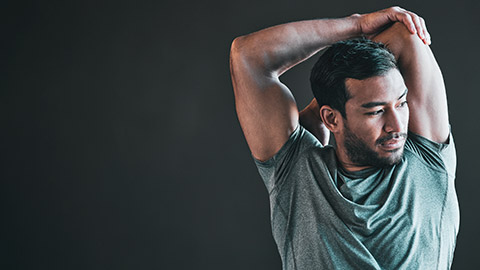
To ensure they are optimally physically prepared before fitness testing, discuss the following key points with your client.
- Avoid heavy strenuous exercise for the 24 hours prior to testing. Do not exercise at all on the day of testing to ensure they are well rested.
- Wear appropriate clothing for the conditions (e.g., shorts/track pants and t-shirt/singlet/sports top) and non-slip athletic footwear with laces securely fastened.
- Remove restrictive jewellery, watches, bracelets or hanging earrings that may get caught in equipment.
- Do not participate in the testing if they are suffering from any injury or illness that is likely to worsen because of participation or if they are unwell/not in good general health.
- Be sure to warm-up prior to the commencement of testing if appropriate. A cardio warm-up before consult and assessment will impact biometric tests like blood pressure and RHR.
- Cool down appropriately. Following completion of testing continue moderate-to light aerobic activity (jog or walk) for 10-minutes followed by some light stretching of both the upper and lower body.
There are 4 main fitness principles of fitness testing. Each principle ensures that the fitness test conducted meets the standardised protocols. These are:
- Specificity
- Reliability
- Validity
- Accuracy.
Standardised protocols
The protocols of each test need to be standardised, ensuring that all tests conducted by you or other professionals are performed in the same fashion to achieve valid results. Additionally, when comparing test results to normative tables, the test must be conducted exactly the same as it was when the original tests were performed for the comparison to be valid.
Let us investigate the mandatory principles of fitness testing.
Specificity
It is important to select specific tests which are relevant to outcomes the client is aiming to achieve. Always apply the principle of specificity!
Reliability
A test is considered reliable if the results are consistent and reproducible over time. It should be possible to obtain the same or similar result on 2 separate trials. This is important as, when repeating testing, the key is to look for small changes in results, with any differences to reflect the changes in fitness of the client and not an error in measurement.
Validity
"When it comes to fitness testing it is imperative that fitness professionals know and understand the dual concepts of validity and reliability. A reliable measure is measuring something consistently, while a valid measure is measuring what it is supposed to measure." (PT Direct, n.d.)
To understand how reliability and validity work together, let’s consider the following case study.
Case Study

Meet George
George is a regular client at the gym where you work. George has had initial fitness testing prior to commencing his training. It was performed by another fitness trainer on George’s day off from work. George came relaxed, prepared, and well-nourished prior to the test. Since then, he has adhered to a training programme and has been dedicated over the last 8 weeks to increasing muscular strength and endurance. His overall goal is to prepare for a 10km run for charity in 16 weeks' time.
George’s initial trainer that conducted the testing on him, is currently on holiday and asked if you could monitor his progress to ensure they are on track to achieving his goals.
At 8 weeks, you book George in for fitness testing. He has booked in on a Friday evening. When he arrived, he informed you that he had had a busy and stressful work week and had just come back from running around at the grocery store to prepare himself for hosting a dinner party that night. George was hot and flustered when he arrived for testing and complained to you that the room was hot. You apologised for the temperature in the room and explained that the air conditioning was currently out of order. He explained that he hadn’t had much chance to sit and eat a proper meal among all their day’s commitments. He consumed many coffees and snacks throughout the day to get by.
You start performing a bike test on George, and after the test, you take down his RHR. The numbers are then calculated and compared against normative data. After comparing the results, you realise that after 8 weeks of Georges hard work and dedicated training, he hasn’t improved their fitness.
You advise him that something may have gone wrong in the testing, and to return the following week to try again.
Let’s take a look at the potential errors in the testing and how they can be fixed for your client’s next testing.
| Potential error | Reliability or validity an issue | Ways to fix the errors for the next test |
|---|---|---|
| Bike testing when her goal is running won’t be as sensitive to changes in her fitness | Validity – the test isn’t measuring the right thing | Chose a test that represents what you want to measure – e.g. running aerobic fitness |
| The equation used to calculate aerobic fitness introduces error due to predictions made | Standard error affecting validity | Choose a test that is performance based and doesn’t use ‘normative’ data – we need to know what the client’s fitness was when they started and how it’s progressing, not how she compares to another population or group of people. |
| A hot room can easily increase heart rate as the body pumps blood to the skin to help with cooling at the same time as it needs to pump blood to the working muscles | Random error affecting test-retest reliability | Take the ambient temperature in the room; if it varies by more than a few degrees, cool the room or plan testing at a better time/location. |
| High levels of stress (rushing around at the grocer) before the test can cause higher heart rates and blood pressure | Random error affecting test-retest reliability | Give the client pre-test information, including what to do the day leading into a test, what to drink, what to eat, how much rest to have, and that testing should always be booked in at the same time of day. |
| Caffeine prior to exercise can increase heart rates and blood pressure | Random error affecting test-retest reliability | As above |
| Training at the end of a heavy week and after running will mean the client is still fatigued and as a result, their fitness will appear worse than it would be if they were rested | Random error affecting test-retest reliability | As above |
| It appears your client hadn’t eaten much, and there is no mention of water intake, so it’s possible they have low blood sugar and slightly de-hydrated – both increasing heart rate and fatigue | Random error affecting test-retest reliability | As above |
Other potential errors may include:
- Different fitness tests performed to their initial testing
- The same test conducted in slightly different ways
- Equipment used for testing is not working properly and may give inaccurate readings
- Equipment used is not calibrated appropriately prior to test conducted.
Errors in testing are best avoided as it can demotivate a client and damage any trust built in the relationship. But unfortunately, they do happen, therefore, it is important to know how they can be rectified and also be vigilant in choosing valid testing for your clients. (PT Direct, n.d.)
Accuracy
When recording the results, it is of the utmost importance that it is done with precision. To be precise, take measurements to at least one decimal place. Rough estimates of results or measurements will lead to unreliable and inaccurate testing, which can impact many factors including the client's trust in you, programme development, and the client's motivation.
When developing a fitness testing session, it is important that you correctly order the sequence in which the tests are performed, as energy consumed in one fitness test can affect the performance in subsequent tests.
Before planning your client’s fitness testing, consider the range of fitness tests that should be conducted. Once you have selected the suitable fitness tests for your client, you will need to start planning the sequence.
Before finalising the sequence for the fitness tests, consider the following influencing factors:
- Time constraints
- Group size (goes hand in hand with time constraints)
- Number of resources (staff and equipment)
- Transition time between tests and recovery time between tests
- Degree of difficulty and intensity/duration (inference factor on proceeding tests)
- The main components of fitness
- Number of tests versus the amount of time (the key is to always factor more time)
Tests to be conduct prior to the warm-up
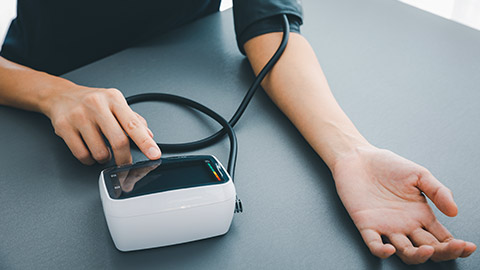
There are a few tests that need to occur prior to the warm-up. These need to be sequenced as follows:
Health checks
Blood pressure and resting heart rate should always be tested first while the person is fully rested.
Anthropometry/Biometric tests
Anthropometry testing is more commonly referred to as Biometric testing. It refers to the measurement and proportions of the human body. Biometric tests should always take place first, and be directly after any health checks.
Note: height and weight must be taken at the same time of day.
Tests to be conducted after the warm-up
After your client has completed a warm-up, other testing can commence. Look at the following tests and consider their order when developing programmes.
Flexibility
The flexibility tests should be scheduled early in the session prior to any activity, after a thorough warm-up or after the speed tests. These can be conducted during transitions from one test to another.
Speed/power tests
A thorough warm-up should precede any speed and power test. The vertical jump test may be performed prior to the sprint test.
Muscle strength
Muscle strength (1-10RM) tests should always be completed prior to muscle endurance tests, but after the speed and power tests.
Muscular endurance
A minimum break of 5-minutes is recommended between muscle strength and muscle endurance tests. If there are several muscular strength and endurance tests in one session, you must allow plenty of time for recovery between tests.
Cardiovascular fitness
Many submaximal cardiovascular tests are based on a heart rate response and may be affected by previous tests, including the client's mental state. These tests should be ordered accordingly. Fatiguing maximal exercise tests, such as a VO2max or beep test and repeat sprint tests, should always be scheduled at the end of a session. If the protocol included both a repeat sprint test and a maximal aerobic test, it is usually wise to have these in separate sessions.
Within the following video, Ben explains gives a helpful framework to the overall process of fitness testing to ensure that every test is implemented appropriately. Have a listen!
All results should be collected and recorded accurately when collating and analysing the data collected from fitness tests. Many fitness instructors choose to use digital data-collecting tools such as Excel or apps. However, it is still common for trainers to record their client's results in fitness testing sheets. It is really a preference of which tool best serves you. Whichever tool you choose to use to record and analyse data should be practical and informative.
We have created fitness testing sheets that you can utilise to document your clients' fitness test results.
To get started, simply download the document onto your computer and save it. You have 2 options for filling out the information:
- You can use the digital form of the sheet: Input your client's data directly onto your computer.
- You can print the document and manually record the results.
The following fitness testing sheet is designed to help you keep track of your client's progress and ensure that you can tailor their fitness programmes to their individual needs.
NZIS Online Fitness Testing Sheet
Recording your client’s results into a data collecting tool such as an app or fitness testing sheet is not used solely for you to monitor the programme design. This tool can also be used for motivating your clients to show that their hard work is making progress. On the contrary, if misused, you may unintentionally demotivate your clients.
For instance, though it is important to be able to read normative data and compare clients to this at certain times, it is not always useful when monitoring your client's improvements over time. This is why it is essential that when re-testing clients, you compare their results with their previous results. In other words, comparing your client to themselves will show the client how far they have come in their own fitness journey, thus motivating them to keep striving forward toward their goal.
Note: Trainers also need to be sure never to label a client based on normative data calling them obese, poor, unhealthy, unfit, on so forth. This can also offend and demotivate a client. Let's keep our language and communication positive and supportive.
Click on each heading to have a look at the following normative charts:
| Men ( cm) | Women (cm) | |
|---|---|---|
| Super | > +27 | > +30 |
| Excellent | +17 to +27 | +21 to +30 |
| Good | +6 to +16 | +11 to +20 |
| Average | 0 to +5 | +1 to +10 |
| Fair | -8 to -1 | -7 to 0 |
| Poor | -20 to -9 | -15 to -8 |
| Very Poor | < -20 | < -15 |
Robert Wood, "Sit and Reach Norms." Topend Sports Website, 2012, https://www.topendsports.com/testing/norms/sit-and-reach.htm, Accessed 20 March 2023
| males | females | |
|---|---|---|
| lean | < 12 | < 17 |
| acceptable | 12 - 21 | 17 - 28 |
| moderately overweight | 21 - 26 | 28 - 33 |
| overweight | > 26 | > 33 |
| Age (years) | ||||||
|---|---|---|---|---|---|---|
| rating | 18-25 | 26-35 | 36-45 | 46-55 | 56-65 | 65+ |
| excellent | > 56 | > 52 | > 45 | > 40 | > 37 | > 32 |
| good | 47-56 | 45-52 | 38-45 | 34-40 | 32-37 | 28-32 |
| above average | 42-46 | 39-44 | 34-37 | 31-33 | 28-31 | 25-27 |
| average | 38-41 | 35-38 | 31-33 | 28-30 | 25-27 | 22-24 |
| below average | 33-37 | 31-34 | 27-30 | 25-27 | 22-24 | 19-21 |
| poor | 28-32 | 26-30 | 22-26 | 20-24 | 18-21 | 17-18 |
| very poor | < 28 | < 26 | < 22 | < 20 | < 18 | < 17 |
Robert Wood, "Norm values for VO2max." Topend Sports Website, 2012, https://www.topendsports.com/testing/norms/vo2max.htm, Accessed 20 March 2023
| Age (years) | ||||||
|---|---|---|---|---|---|---|
| rating | 18-25 | 26-35 | 36-45 | 46-55 | 56-65 | 65+ |
| excellent | > 60 | > 56 | > 51 | > 45 | > 41 | > 37 |
| good | 52-60 | 49-56 | 43-51 | 39-45 | 36-41 | 33-37 |
| above average | 47-51 | 43-48 | 39-42 | 36-38 | 32-35 | 29-32 |
| average | 42-46 | 40-42 | 35-38 | 32-35 | 30-31 | 26-28 |
| below average | 37-41 | 35-39 | 31-34 | 29-31 | 26-29 | 22-25 |
| poor | 30-36 | 30-34 | 26-30 | 25-28 | 22-25 | 20-21 |
| very poor | < 30 | < 30 | < 26 | < 25 | < 22 | < 20 |
Robert Wood, "Norm values for VO2max." Topend Sports Website, 2012, https://www.topendsports.com/testing/norms/vo2max.htm, Accessed 20 March 2023
Case study: Sit and reach
You have conducted the sit and reach fitness test for 3 clients, Kathryn, Jonati and Kim. You need to compare their results with the normative data shown in the following table. Analyse the results for each client to determine their flexibility range.
| Men ( cm) | Women (cm) | |
|---|---|---|
| Super | > +27 | > +30 |
| Excellent | +17 to +27 | +21 to +30 |
| Good | +6 to +16 | +11 to +20 |
| Average | 0 to +5 | +1 to +10 |
| Fair | -8 to -1 | -7 to 0 |
| Poor | -20 to -9 | -15 to -8 |
| Very Poor | < -20 | < -15 |
Robert Wood, "Sit and Reach Norms." Topend Sports Website, 2012, https://www.topendsports.com/testing/norms/sit-and-reach.htm, Accessed 20 March 2023
Comparing client results to normative data
Additional fitness testing data
Along with the information pertaining to the test results, it is also important to ensure the following data is also captured. This can be considered additional data and though it doesn’t reflect the results of the tests conducted, it is of equal importance. This includes noting the following details.
- Date and time of testing
- Personal details (name, age, contact details)
- Current state of the client athlete (fitness level, any injuries, health status, fatigue level, sleep)
- Activity details (sport involved in, event)
- Basic physiological data (weight, resting heart rate)
- Environmental and surface conditions (wet, slippery, wind, temperature, humidity, indoors)
- Client goals
Details given to you by the client will enable you to view the information holistically, providing you with a path forward towards developing a personalised fitness testing programme.
